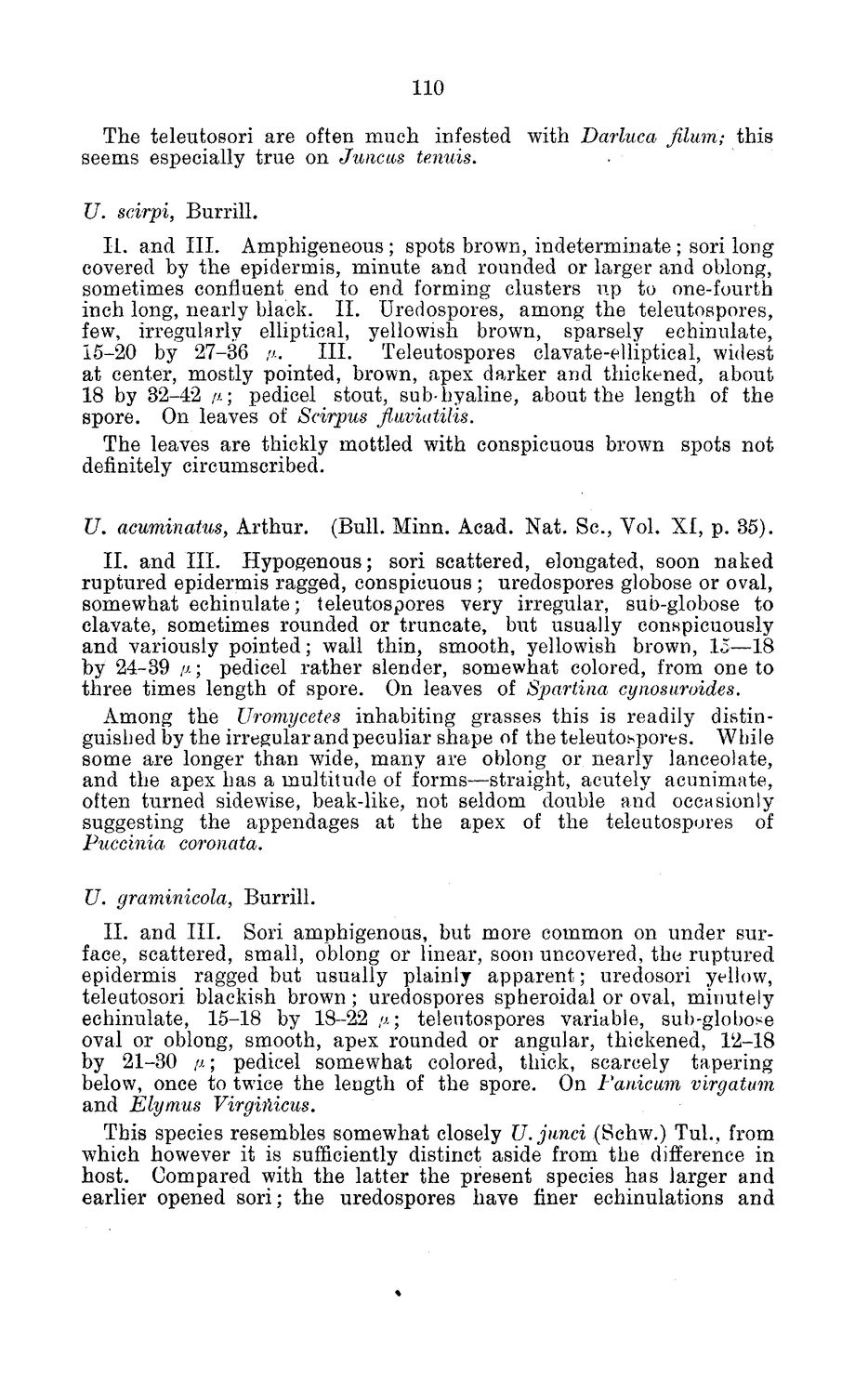| |
| |
Caption: Board of Trustees Minutes - 1884
This is a reduced-resolution page image for fast online browsing.

EXTRACTED TEXT FROM PAGE:
110 The teleutosori are often much infested with Darluca filurn; this seems especially true on Juncus tenuis. U. scirpi, Burrill. II. and III. Amphigeneous; spots brown, indeterminate ; sori long covered by the epidermis, minute and rounded or larger and oblong, sometimes confluent end to end forming clusters up to one-fourth inch long, nearly black. II. Uredospores, among the teleutospores, few, irregularly elliptical, yellowish brown, sparsely echinulate, 15-20 by 27-36 /*. III. Teleutospores clavate-elliptical, widest at center, mostly pointed, brown, apex darker and thickened, about 18 by 32-42 /*; pedicel stout, sub-hyaline, about the length of the spore. On leaves of Scirpus fluviatilis. The leaves are thickly mottled with conspicuous brown spots not definitely circumscribed. U. acuminatus, Arthur. (Bull. Minn. Acad. Nat. S c , Vol. XI, p. 35). II. and III. Hypogenous; sori scattered, elongated, soon naked ruptured epidermis ragged, conspicuous; uredospores globose or oval, somewhat echinulate; teleutospores very irregular, sub-globose to clavate, sometimes rounded or truncate, but usually conspicuously and variously pointed; wall thin, smooth, yellowish brown, 15—18 by 24-39 ji; pedicel rather slender, somewhat colored, from one to three times length of spore. On leaves of Spartina cynosuroides. Among the Uromycetes inhabiting grasses this is readily distinguished by the irregular and peculiar shape of the teleutospores. While some are longer than wide, many are oblong or nearly lanceolate, and the apex has a multitude of forms—straight, acutely acunimate, often turned sidewise, beak-like, not seldom double and occasionly suggesting the appendages at the apex of the teleutospores of Puccinia coronata. JJ. graminicola, Burrill. II. and III. Sori amphigenous, but more common on under surface, scattered, small, oblong or linear, soon uncovered, the ruptured epidermis ragged but usually plainly apparent; uredosori yellow, teleutosori blackish brown; uredospores spheroidal or oval, minutely echinulate, 15-18 by 18-22 //; teleutospores variable, sub-globose oval or oblong, smooth, apex rounded or angular, thickened, 12-18 by 21-30 n; pedicel somewhat colored, thick, scarcely tapering below, once to twice the length of the spore. On Fanicam virgatum and Elymus Virgifticus. This species resembles somewhat closely U.junci (Schw.) Tul., from which however it is sufficiently distinct aside from the difference in host. Compared with the latter the present species has larger and earlier opened sori; the uredospores have finer echinulations and
| |